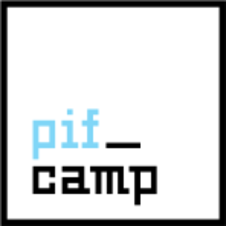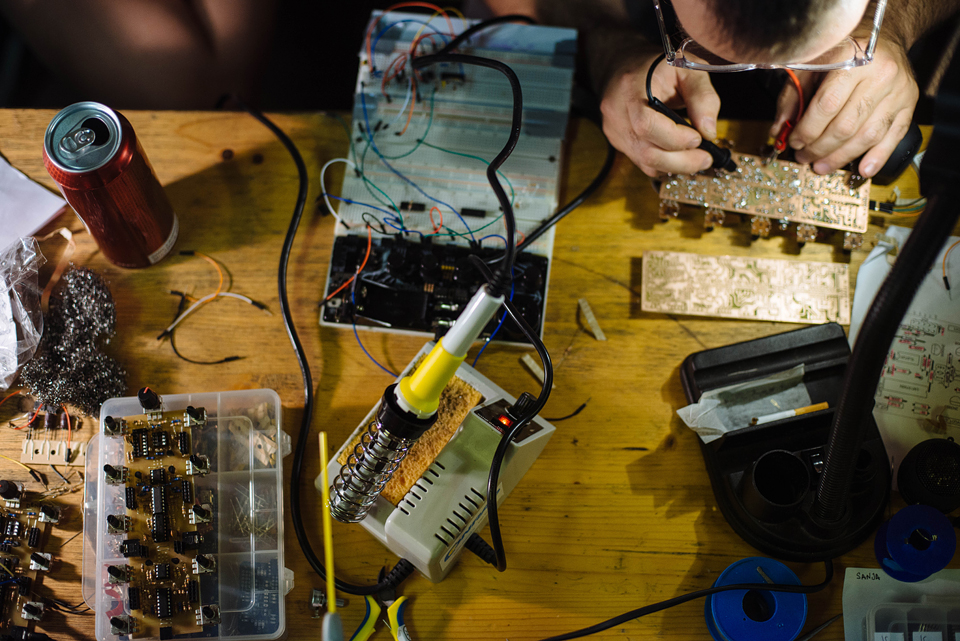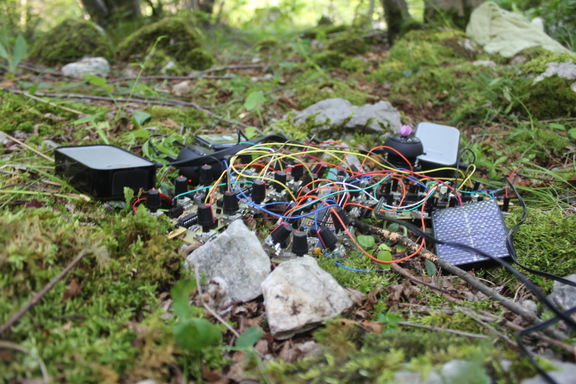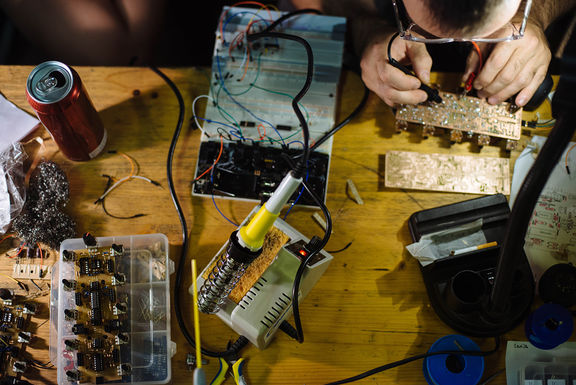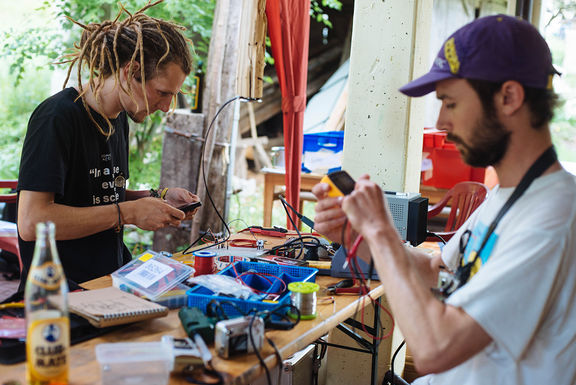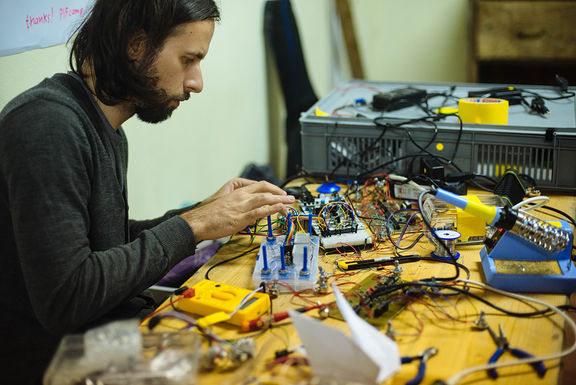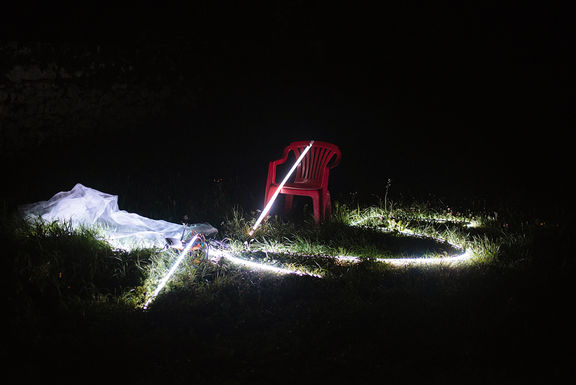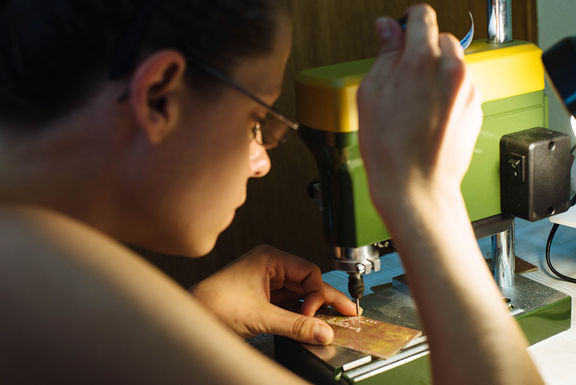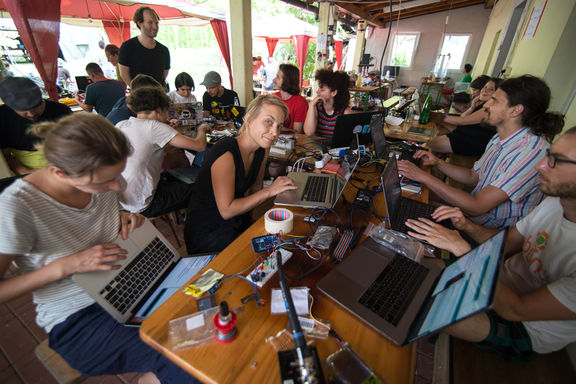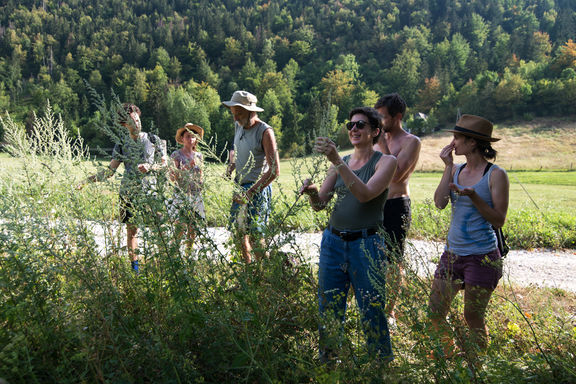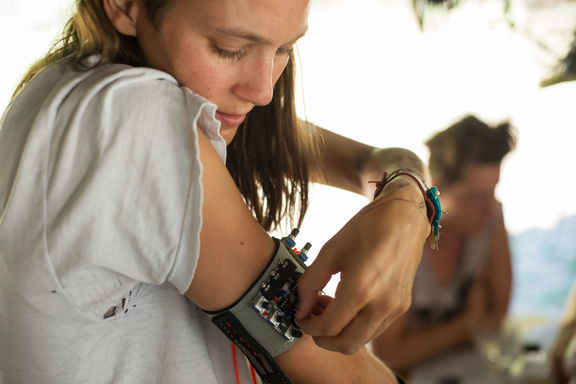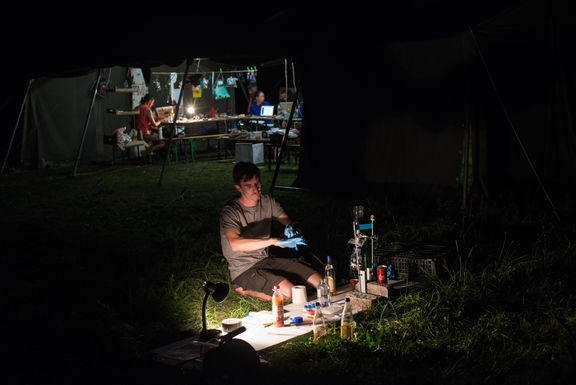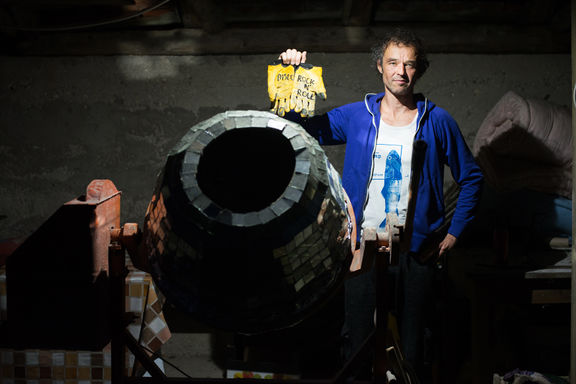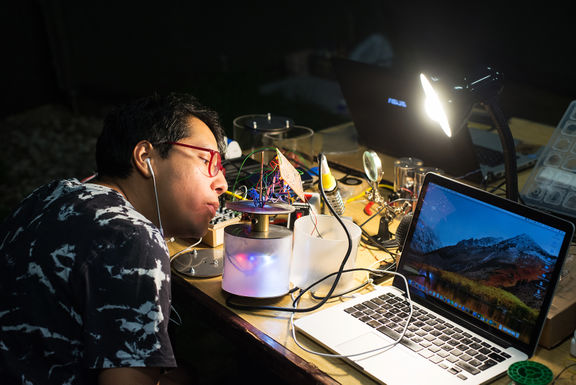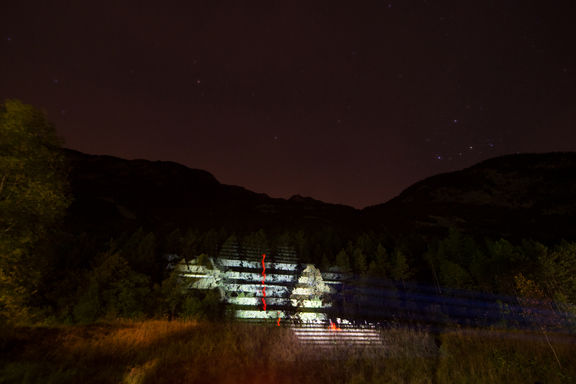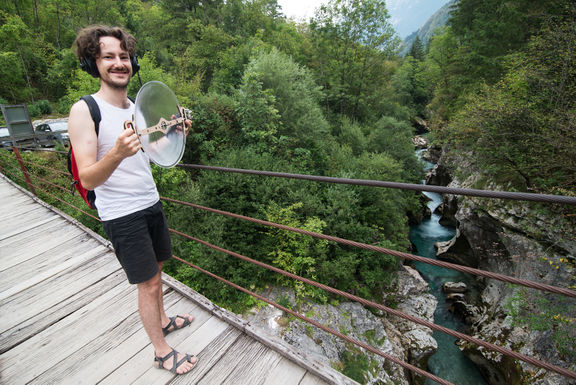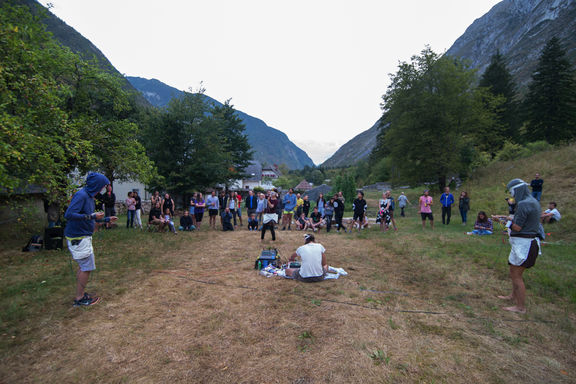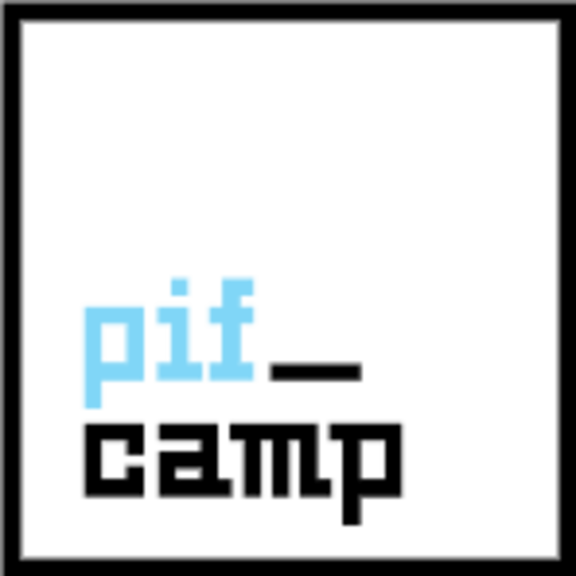Difference between revisions of "PIFcamp"
Anže Zorman (talk | contribs) (Finished article) |
Anže Zorman (talk | contribs) (Photo gallery, minor upgrade) |
||
| Line 29: | Line 29: | ||
{{Teaser| | {{Teaser| | ||
| + | {{Wide Image|PIFcamp 2015 Peter EdwARDS.jpg}} | ||
| + | |||
[[PIFcamp]] is a week-long international gathering (or hack-camp) that facilitates explorations into the various intersections of art and technology. Held in the stunning Alpine valley of the Soča river, in the [[Triglav National Park]], the core of this fundamentally open-ended project consists of hands-on workshops, presentations, field trips and – most importantly – spontaneous collaborations and skills exchanges | [[PIFcamp]] is a week-long international gathering (or hack-camp) that facilitates explorations into the various intersections of art and technology. Held in the stunning Alpine valley of the Soča river, in the [[Triglav National Park]], the core of this fundamentally open-ended project consists of hands-on workshops, presentations, field trips and – most importantly – spontaneous collaborations and skills exchanges | ||
Of key importance is active involvement of the participants, who are invited to contribute their ideas, skills and ambitions into the collective creative endeavour. The camp is organised by the [[Ljudmila Art and Science Laboratory]] and the [[Projekt Atol Institute]]. | Of key importance is active involvement of the participants, who are invited to contribute their ideas, skills and ambitions into the collective creative endeavour. The camp is organised by the [[Ljudmila Art and Science Laboratory]] and the [[Projekt Atol Institute]]. | ||
}} | }} | ||
| − | |||
| − | |||
==Context and background== | ==Context and background== | ||
| Line 45: | Line 45: | ||
With PIFcamp's fundamental principles being DIY (do-it-yourself), DIWO (do-it-with-others) and DITO (do-it-together), the meeting is foremost a platform for distributing knowledge, ideas and experiences. Styling itself as a hack camp, PIFcamp sees hacking as a broad set activities that disrupt the regular patterns of uses and treatments of technology. | With PIFcamp's fundamental principles being DIY (do-it-yourself), DIWO (do-it-with-others) and DITO (do-it-together), the meeting is foremost a platform for distributing knowledge, ideas and experiences. Styling itself as a hack camp, PIFcamp sees hacking as a broad set activities that disrupt the regular patterns of uses and treatments of technology. | ||
| + | |||
| + | {{Wide Image|PIFcamp 2015 Hacking the meadows.JPG}} | ||
==Programme== | ==Programme== | ||
| Line 56: | Line 58: | ||
The meeting is open to anyone yet limited to about 50 people. The organisers are looking for hackers, makers, DIY enthusiasts, scientists, programmers, noise freaks, new media artists, obsolete and new technology geeks, bio-artists, and so on. A short proposal on what one wants to develop or learn during PIFcamp is needed from those applying to attend. | The meeting is open to anyone yet limited to about 50 people. The organisers are looking for hackers, makers, DIY enthusiasts, scientists, programmers, noise freaks, new media artists, obsolete and new technology geeks, bio-artists, and so on. A short proposal on what one wants to develop or learn during PIFcamp is needed from those applying to attend. | ||
| − | Some of the hosted artists and researchers have been the Swiss bio-hacker Marc Dusseiller (also of [[BioTehna]]), who conducted different experiments on local plants, from sound analysis to chlorophyll extraction; Lynne Bruning (US), who utilised embroidery, lace making, and sewing to make wearable electronics and eTextiles; Peter Edwards aka Casper Electronics (US), who dealt with DIY electronics for music making; Václav Peloušek (Bastl Instruments, CZ), who worked on modular synthesizers; and Leslie Garcia and Paloma Lopez (MX), who explored the relationships between waveforms, living matter and the way in which sound frequencies affect and create physical forms. The local [[Dario Cortese]] led a field workshop on collecting edible wild plants. | + | Some of the hosted artists and researchers have been the Swiss bio-hacker Marc Dusseiller (also of [[BioTehna]]), who conducted different experiments on local plants, from sound analysis to chlorophyll extraction; Lynne Bruning (US), who utilised embroidery, lace making, and sewing to make wearable electronics and eTextiles; Peter Edwards aka Casper Electronics (US), who dealt with DIY electronics for music making; Václav Peloušek (Bastl Instruments, CZ), who worked on modular synthesizers; and Leslie Garcia and Paloma Lopez (MX), who explored the relationships between waveforms, living matter and the way in which sound frequencies affect and create physical forms. |
| + | |||
| + | The local [[Dario Cortese]] led a field workshop on collecting edible wild plants, while [[Luka Frelih]] (also head of [[Ljudmila Art and Science Laboratory|Ljudmila]]) among other things created a so called Hacktivated Reactive Network, which took on signals from the real world environment of the PIFcamp, morphed them trough live-coded scripts and feed them back to the camp trough screens and kinetic sculptures. | ||
| + | |||
| + | Numerous other artists (coming from the USA, the UK, Japan, Finland, Poland, Hong Kong, Spain, France and several other countries) applied by themselves, among them Tom O'Dea (IR), Sebastian Frisch (AT), [[Robertina Šebjanič]], [[Marko Peljhan]], [[Tilen Sepič]] and many others. | ||
| − | + | {{Vimeo|157121775}} | |
==See also== | ==See also== | ||
| Line 71: | Line 77: | ||
*[http://www.makery.info/en/2015/08/10/slovenie-les-hackers-sen-vont-dans-la-nature/ A review of PIFcamp 2015 at Makery.info] | *[http://www.makery.info/en/2015/08/10/slovenie-les-hackers-sen-vont-dans-la-nature/ A review of PIFcamp 2015 at Makery.info] | ||
*[http://sepic.cc/filter/installation/Light-Oscillator-prototype A web page about one of the projects developed at PIFcamp] by [[Tilen Sepič]] | *[http://sepic.cc/filter/installation/Light-Oscillator-prototype A web page about one of the projects developed at PIFcamp] by [[Tilen Sepič]] | ||
| + | |||
| + | {{Gallery}} | ||
[[Category:Festivals]] | [[Category:Festivals]] | ||
[[Category:Festivals in July]] | [[Category:Festivals in July]] | ||
[[Category:Festivals in August]] | [[Category:Festivals in August]] | ||
Revision as of 15:42, 27 July 2016
Context and background
First held in 2015, PIFcamp is an extension of the artistic, educational and awareness raising endeavours conducted by the Ljudmila lab and the Projekt Atol Institute. Both are involved in new media art and technology related activities and have been running a joint programme of workshops, artist residencies and art projects since 2012.
Initially, the gathering was established as a part of the Changing Weathers project. Co-funded by the Creative Europe programme, this project is coordinated by Projekt Atol and features partners from Norway (Hilde Methi), Finland (the Finnish Bioart Society), Latvia (RIX-C), the Netherlands (Sonic Acts), Austria (Time’s Up) and Slovenia (Ljudmila). Its basic aim is to facilitate responses towards the precarious geophysical, geopolitical and technological predicaments of our time.
Concept
With PIFcamp's fundamental principles being DIY (do-it-yourself), DIWO (do-it-with-others) and DITO (do-it-together), the meeting is foremost a platform for distributing knowledge, ideas and experiences. Styling itself as a hack camp, PIFcamp sees hacking as a broad set activities that disrupt the regular patterns of uses and treatments of technology.
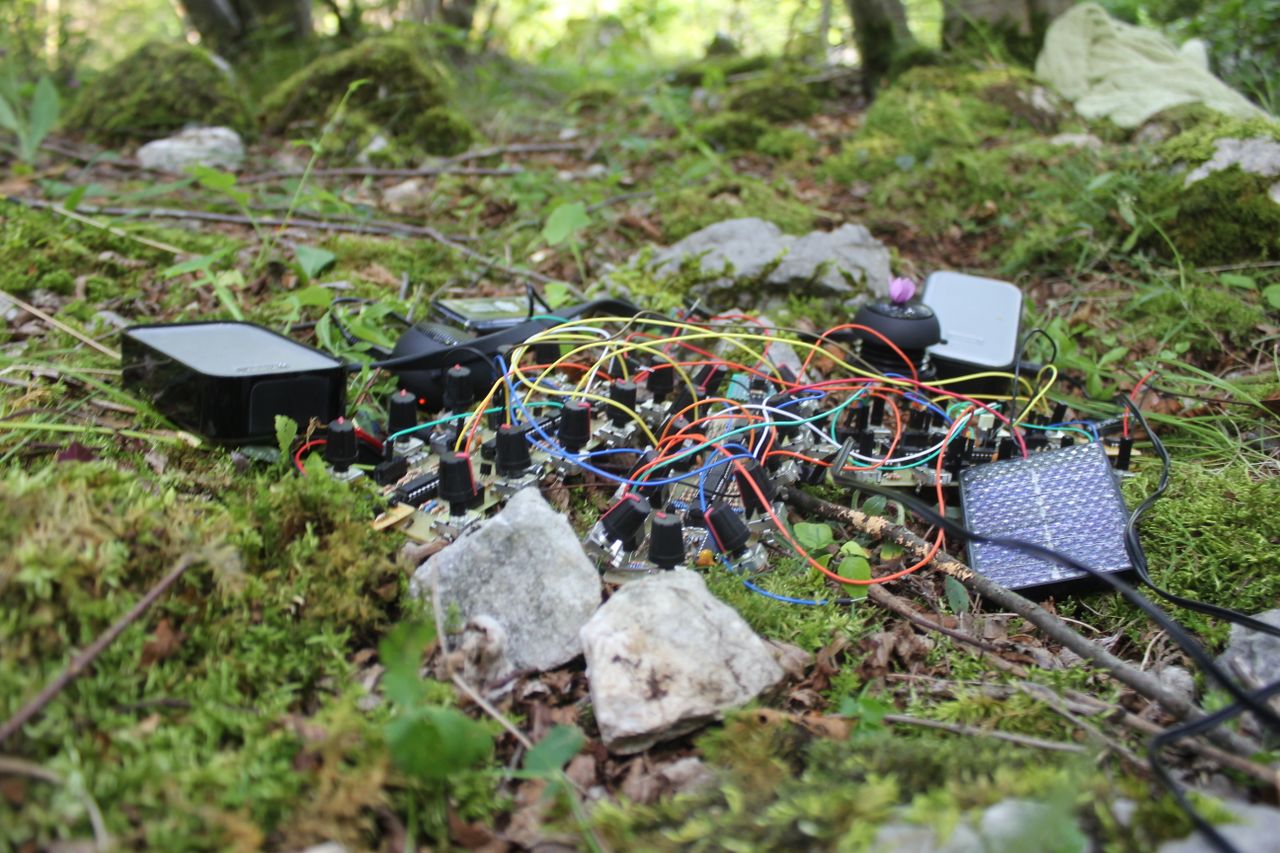
Programme
Each year, a select number of artists and researchers is invited to hold workshops, theoretical lectures and on-sight briefings. Other participants are equally invited to share their knowledge, and the roles of mentors and apprentices frequently change and overlap. Consequently, the outcomes and topics of the camp are only partially predefined.
Some of the creative fields tackled at PIFcamp have been DIY synthesizer-making, e-textiles and wearable electronics, artefacts and systems that interact with nature, light installations, bio-hacking, and music.
The participants
The meeting is open to anyone yet limited to about 50 people. The organisers are looking for hackers, makers, DIY enthusiasts, scientists, programmers, noise freaks, new media artists, obsolete and new technology geeks, bio-artists, and so on. A short proposal on what one wants to develop or learn during PIFcamp is needed from those applying to attend.
Some of the hosted artists and researchers have been the Swiss bio-hacker Marc Dusseiller (also of BioTehna), who conducted different experiments on local plants, from sound analysis to chlorophyll extraction; Lynne Bruning (US), who utilised embroidery, lace making, and sewing to make wearable electronics and eTextiles; Peter Edwards aka Casper Electronics (US), who dealt with DIY electronics for music making; Václav Peloušek (Bastl Instruments, CZ), who worked on modular synthesizers; and Leslie Garcia and Paloma Lopez (MX), who explored the relationships between waveforms, living matter and the way in which sound frequencies affect and create physical forms.
The local Dario Cortese led a field workshop on collecting edible wild plants, while Luka Frelih (also head of Ljudmila) among other things created a so called Hacktivated Reactive Network, which took on signals from the real world environment of the PIFcamp, morphed them trough live-coded scripts and feed them back to the camp trough screens and kinetic sculptures.
Numerous other artists (coming from the USA, the UK, Japan, Finland, Poland, Hong Kong, Spain, France and several other countries) applied by themselves, among them Tom O'Dea (IR), Sebastian Frisch (AT), Robertina Šebjanič, Marko Peljhan, Tilen Sepič and many others.
See also
- Projekt Atol Institute
- Ljudmila Art and Science Laboratory
- Strictly Analog Festival
- Triglav National Park
- BioTehna
External links
- PIFcamp website
- A review of PIFcamp 2015 at Makery.info
- A web page about one of the projects developed at PIFcamp by Tilen Sepič



